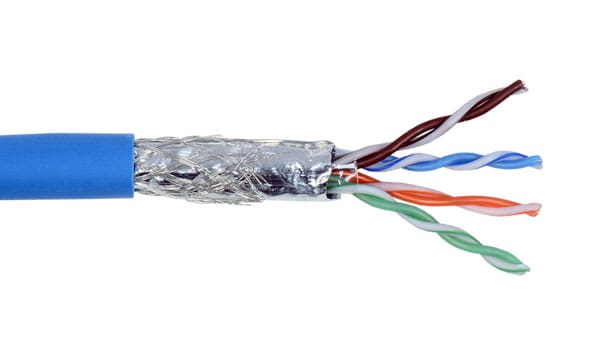Plenum cable, often referred to as CMP cable, stands as a pivotal component in modern structured cabling systems. This article delves into the intricacies of plenum cable, elucidating its purpose, history, and contemporary relevance in computer networking. Designed for safety and efficiency, plenum cable is a specialized wiring solution employed in specific building spaces to enhance fire resistance and reduce hazardous emissions.
Jump to:
- What is Plenum Cable?
- Inception and Evolution
- Application and Relevance
- Contemporary Alternatives
- References

1. What is Plenum Cable?
At its core, plenum cable embodies a high-grade, fire-resistant wiring used predominantly in building plenum spaces. Plenums, typically found in spaces between floors or above false ceilings, are crucial for air circulation in buildings. Plenum cables are distinct due to their construction; they possess jackets made of low-smoke materials like fluorinated ethylene polymer (FEP) or fire-resistant forms of polyvinyl chloride (PVC). This construction not only slows down fire spread but also minimizes toxic smoke release during combustion, ensuring enhanced safety in commercial and residential buildings.
False ceilings are not considered plenums. Plenum cabling is less flexible and costlier than polyvinyl chloride (PVC) cabling. The external insulating jacket of plenum cabling is usually a fluoropolymer such as Teflon FEP.
Plenum cables use treated jackets, usually low-smoke PVC (polyvinyl chloride) or FEP (fluorinated ethylene polymer). The jacket is designed to 1) hinder the progression of flame and 2) not release the harmful smoke that normally accompanies any type of burning plastic. We use Teflon (or PTFE) coated wires in our plenum network cables to make sure that the cables are safe and heat-resistant.
Plenum cables are the highest standard and can safely be substituted for any other cable type such as riser, CM, CL2 or CL3 cables.
2. Inception and Evolution
The genesis of plenum cable is intertwined with the evolution of building safety standards. Invented in response to disastrous fires, notably those that underscored the hazards of toxic smoke, this cable type was born from the necessity for safer, more fire-resistant building materials. Over the years, plenum cable has evolved, incorporating advanced materials and designs to meet rigorous fire safety standards and adapt to the changing landscape of building architecture and networking needs.
3. Application and Relevance
Primarily, plenum cable is used in the plenum spaces of buildings, where air circulation requires cables to be fire-resistant and emit minimal smoke. This application is not just a matter of compliance with safety standards but a crucial aspect of ensuring public safety in commercial and residential buildings. Its usage extends to various networking setups, particularly where cable runs traverse plenum spaces. In the present day, plenum cable remains a staple in network cabling, lauded for its safety features and reliability.
4. Contemporary Alternatives
While plenum cable continues to hold significant importance, advancements in cable technology have introduced alternatives like low-smoke zero-halogen (LSZH) cables. These modern alternatives cater to the growing demand for environmentally friendly and safer cabling solutions. However, plenum cables still retain their dominance due to their established safety record and widespread acceptance in building codes and standards.
5. References
Key standards include:
- National Electrical Code (NEC): In the United States, the NEC, particularly Article 800, provides guidelines for the installation of communications cables, including plenum cables. This code classifies cables into different categories (like CMP for plenum cables) based on their fire and smoke characteristics.
- Underwriters Laboratories (UL): UL standards, particularly UL 910, test for the flammability and smoke production of wires and cables used in air handling spaces. Plenum cables must pass this stringent test to be certified as CMP.
- International Standards:
- IEC (International Electrotechnical Commission): While not directly regulating plenum cables, IEC sets standards for cable fire performance, which can apply to cables used in plenum-like spaces in international settings.
- ISO (International Organization for Standardization): Provides general guidelines on the safety and installation of electrical wiring in buildings, which can encompass the use of plenum cables in certain contexts.
Books:
- “Cabling: The Complete Guide to Copper and Fiber-Optic Networking” by Andrew Oliviero and Bill Woodward.
- “Data, Voice, and Video Cabling” by Jim Hayes and Paul Rosenberg.
- “National Electrical Code Handbook” by National Fire Protection Association (NFPA).
